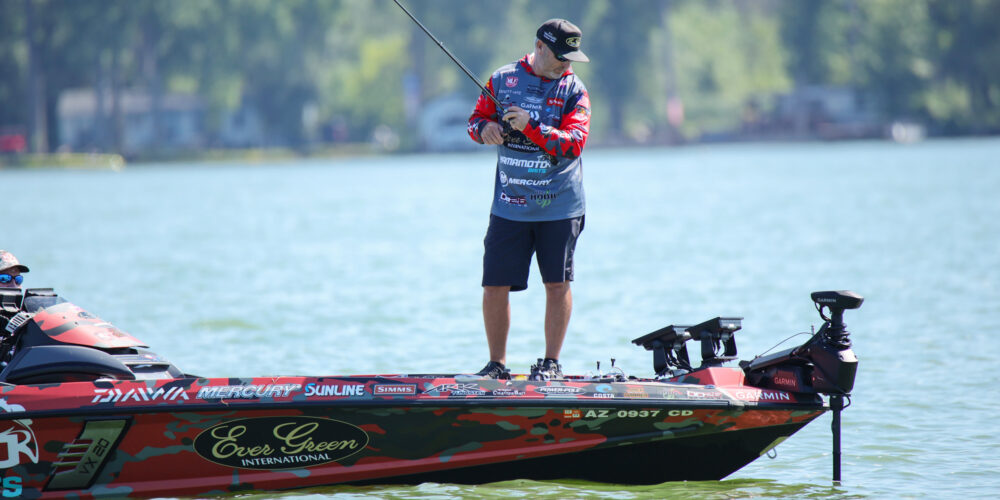BRETT HITE: We’re Still in the Learning Phase with Forward-Facing Sonar

As much as we’ve heard about forward-facing sonar over the past few years, it’s still a new technology. I’ve been a professional angler for my entire adult life and it’s among the most significant changes I’ve seen in the sport. It’s something that I’m asked about all the time and the truth is, we’re still learning how to be better with forward-facing sonar.
The bottom line, though, is that this tool is here to stay. The technology is improving every year, and I’ve learned a few things over the past handful of years of using it that make me more efficient on the water.
Know Your Transducer
No matter what brand of electronics and trolling motor you run, knowing your transducer and how it’s mounted is one of the most important things to understand. All transducers are a little different in where they point, and you need to find the sweet spot on your individual transducer that gives you the best picture. It might be pointed a few degrees to the right or left of where the trolling motor is pointed.
It’s a minor detail but crucial for making the most accurate casts.
One of the easiest ways to figure this out is to look for a buoy and scan to see the cable or rope. Pay close attention to where the trolling motor is pointed when you have the best picture. Mine is just a hair to the left. You can also find this by looking at bridge pilings or even right at the boat ramp where you can see the ramp entering the water.
Identifying where the brightest return is for your setup will help you dial in what you’re seeing onscreen, and give you the best ability to make an accurate cast.
Choose the Best Baits
Part of the formula for picking the right bait for forward-facing sonar is using something that shows up well on the screen. In the warmer months, the drop-shot is king. It shows up very well (and even better if you use tungsten weights). I like the teardrop ARK No Chip Tungsten Drop Shot weight because the shape and hardness of the tungsten shows up much easier than lead.
A Ned rig also shows up pretty well and is one of the best ways to catch them on forward-facing sonar.
A jerkbait is a great bait in the winter months, and it happens to be great for forward-facing sonar because it shows up so well and you can easily see how fish react to your bait. An Alabama rig is another excellent tool that shows up well and can be a fun way to catch fish during the coldest times of the year.
Settings and New Transducers
Garmin’s LiveScope has been around for several years, but it’s taken over the fishing world in the last three years or so. The version I’m running on my boat is their newest transducer, the LVS34 LiveScope Plus. It’s the best one out there because you can see fish 90 feet away, whereas, in prior models, the maximum was 50 to 60 feet.
With everyone using forward-facing sonar now, the fish have begun to sense boat presence more and more, and being able to see further away gives you an edge. For my settings, I like to keep the depth set at automatic and have my forward range at 90 or 100 feet.
The one other thing I adjust is the gain. I’ll keep that anywhere between 65 and 72%, depending on how much clutter is in the water. It’s something I’ll play with throughout the day to get the clearest screen.
I’ve learned that forward-facing sonar is a valuable tool for showing rocks, grass, and other structure and cover. There’s a lot more to it than just seeing fish, and we’re all still learning how to be better with it.